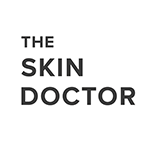What is Eczema?
Written by Dr. Chris Irwin
Eczema is a common skin problem, especially in young children and adults. As many as 20% of us have an underlying tendency towards eczema. It is characterised by dryness, redness and itching of the skin – affecting often the face, front of the elbows (antecubital fossa) and behind the knees (popliteal fossa). Young infants may have a slightly different distribution of rash – having a distribution more along the outside of the elbows, knees and ankles.
It can be thought of as an allergic problem and often eczema co-exists with other allergic illnesses like hay fever, asthma and allergic rhinitis. There can often be family history of these illnesses as well.

What causes Eczema?
Written by Dr. Chris Irwin
Eczema is a complicated illness with lots of potential causes. The most common cause is a genetic problem in how the “bricks” in the outermost layers of skin stick together. Imagine you have a waterproof brick wall (the skin). In some (eczema prone) people however – the mortar that glues the bricks together is not very good, and definitely not watertight. This dries out the skin (as the skin cannot trap the moisture inside if it is broken).
We do not know for sure as to whether the breakdown in integrity of the skin causes increased inflammation and immune response (the redness and itch) or whether an abnormal immune response/ allergy in the skin causes the integrity of the skin to break down. A classic chicken or egg problem. Probably a few different problems cause the same result. The end result is however the same – a very sensitised allergic skin that is dry, red and itchy.
How do we treat Eczema?
Written by Dr. Chris Irwin
Avoid triggers
- Heat or rapid temperature change
- Sweating
- Stress
- Dryness in the air (low humidity)
- Chemicals and cleaning solutions – soaps, detergents, perfumes, itchy clothes (wool or synthetics), dust, cigarette smoke. Always wear gloves when cleaning dishes, dealing with household chemicals or if your work requires dealing with chemicals (e.g. hairdressing)
- Treat any skin infections and reduce bacterial load on the skin (e.g. through bleach baths)
- Consider using antihistamines or Calamine lotion to reduce itch (and therefore break the itch – skin breakdown – worsening of eczema – increasing itch cycle)
Keep skin moisturised
This is by far the most important part of Eczema maintenance therapy and will minimise the need for any active treatment. The best moisturisers for eczema are thick emollients or ointments (eg – Vaseline Petroleum Jelly). Creams are the next best (e.g. Cetaphil moisturising cream). This keeps all the moisture in the skin. However, it is very greasy, and many people do not find this practical to use multiple times a day. Otherwise, Lotions (e.g. Dermeze, Cetaphil or CeraVe) are less good at keeping the moisture in, but much better tolerated.
I usually suggest using a cream or vaseline immediately after a bath, and then to use lotions another 2+ times a day (e.g. first thing in the morning, at lunch or when you get home from work).
Some moisturisers may be better than others – I recommend always avoiding moisturises with too many additives (e.g. perfumes or cosmetics) as this may make your skin worse, not better. Interestingly, CeraVe has been designed to include the same natural barrier particles on normal (non eczema) skin. It is currently unclear as to whether this makes any difference compared to the cheaper standard brands like Dermeze or Cetaphil.
Have a bath every day (not too hot!)
I recommend having a bath every day. You may include the bleach bath recipe (from here) or not, depending on how bad your eczema is. Never use soap – always use a non soap cleanser like Dove. If you can’t have a bath, a shower is probably just as good (except you can’t use the bleach bath recipe). Whether you have a shower or bath, gently pat the skin down (do not rub hard), and also do not completely dry yourself – immediately cover yourself in an emollient or cream to lock all that great moisture in!
A helpful way to reduce the need for topical steroid use is to consider eczema or “bleach baths”. This sounds a bit scary, but the concentration of bleach in the bath is far less than a swimming pool, for example. Always talk to your doctor first and read this link from the Royal Children’s.
Treating skin irritation when it occurs
Written by Dr. Chris Irwin
Topical medications
Topical steroids are the most common treatment for eczema. A big mistake is not doing the maintenance treatments above (moisturising at least 3x a day, avoiding triggers, et cetera). This will minimise the amount of steroids that you need.
Many people are concerned about the risks of steroids – particularly skin thinning. These risks are mostly overstated and minimised as long as you are under the careful review and care of your doctor.
There are also non-steroidal options that do not have the risks of skin thinning – you should talk to your doctor about whether Elidel (Pimecrolimus) may be more suitable for eczema treatment on the face, for example. Tacrolimus is a similar topical medication that can be used elsewhere on the body. There are even newer medications like Crisaborole (not currently PBS subsidised) for the body. Talk to your doctor about what is right for you, but know there are so many options these days.
Reduce bacterial or viral skin burden
Flares of eczema cause further skin barrier breakdown. This often allows the skin to become infected with bacteria or viruses, which then can increase inflammation and then make the eczema worse. This quickly turns into a positive feedback loop. If this is occurring, your doctor may prescribe antibiotics, antiviral medications, or bleach baths.
Treating itch
With Calamine lotion, oral antihistamines, frequent moisturising. Occasionally, your doctor may prescribe a compounded topical solution of Doxepin.
Wet dressings
Wet dressings help keep the skin moist, reduce itch and prevent you or your child from inadvertently scratching the skin and making it worse.
See the Royal Children’s Hospital link here for detailed instructions
Advanced treatments
Phototherapy (UV therapy) probably works by reducing the immune response in the skin.
There are also medications that suppress your immune system response in various ways – these include Cyclosporine or the much newer Dupilumab (which is an injection). These tend to have significant drawbacks or costs, so are only used in the most serious cases of Eczema.
Hand Eczema
Written by Dr. Chris Irwin
Hand eczema is a condition I see quite poorly treated quite often. The basics are the same as above. The key I tend to find helping my patients is that the steroid needs to be strong (eg. Diprosone) and that the causative factors (eg occupational or household exposure to chemicals) need to be addressed properly. Talk to your doctor.
Will changing diet help my (or my child’s) Eczema?
Written by Dr. Chris Irwin
Despite popular belief, there is little evidence that change in diet can help eczema, while there is evidence that it can harm (especially young children through reduced growth).
Some studies have shown that in children with medically proven egg allergy, an egg free diet may help. I recommend never changing your child’s diet without in person expert advice, and in my practice I find it very rarely helpful.

